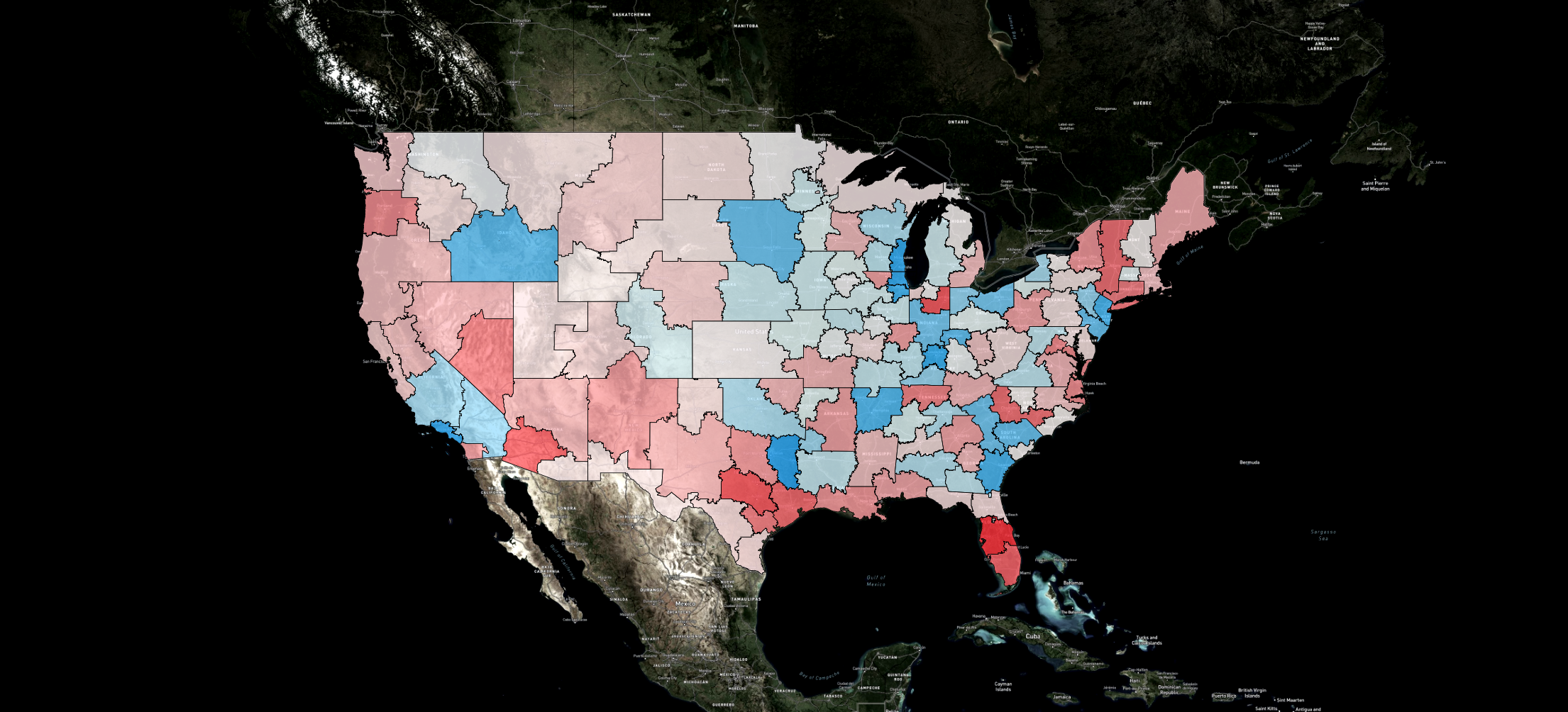A Key Market Area, or KMA, is a collection of 3-digit ZIP code areas that are influenced by the size of populations. Not all freight markets act the same, but freight procurement within smaller regionalized markets is more predictable. There are 135 total KMAs across the United States, and they do not hold a standard shape or size. They can expand beyond state lines, and are each unique.

Current TRAC Rates for Van and Reefer loads are calculated at a point to point basis and then expand across space and time to provide context and accuracy to the rate provided. Loads farther away in space and/or time are weighted less. Flatbed TRAC rates are based on KMA to KMA. KMA rates use TRAC contributor loads from an entire KMA, starting with the last 7 days, taking into account the length of haul of the requested lane, and expanding back in time when necessary to aggregate a rate with the highest possible confidence.
Every company is going to look at rate methodologies differently. There is no perfect answer or secret sauce. There are instances where either methodology might line up as “more accurate” according to the rate a company is seeing in the market but both are fairly similar in most cases. As TRAC continues to expand, impacts to overall rate data decrease and SONAR increases in confidence on each of the more than 1 Million lanes we service.